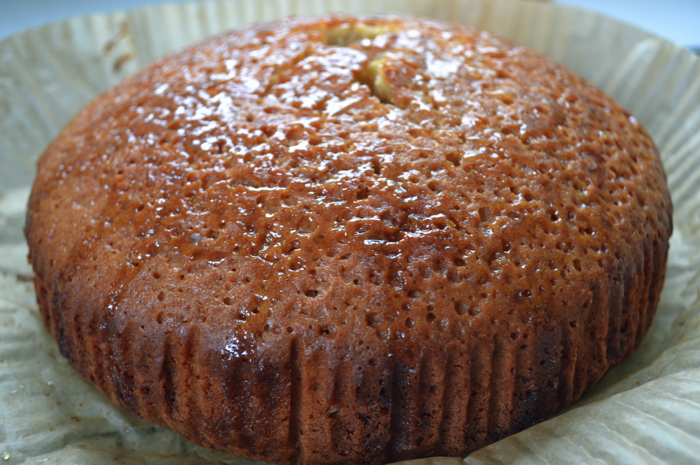
ts like bicarbonate of soda, helping cakes rise beautifully without artificial additives.
What makes honey cakes special is their adaptability to regional flavours. In England, where honey has been harvested for centuries, traditional recipes often incorporate local botanicals, resulting in nuanced tastes like wildflower or heather notes. Bee Marvellous English Honey exemplifies this, sourced from sustainable apiaries in the English countryside. Its raw, unfiltered nature retains enzymes, antioxidants, and pollen, offering antibacterial properties and a boost to immunity – benefits that shine through in baked goods. Unlike processed honey, which can taste flat, Bee Marvellous brings a creamy texture and complex profile, with hints of clover and herbs that complement spices like cinnamon or ginger.
In honey cakes, this results in a golden hue, a tender interior, and a slight chewiness that’s utterly addictive. For those seeking healthier options, honey’s lower glycaemic index compared to sugar provides steady energy, making these cakes ideal for breakfast or snacks.
Ingredients for Honey Cakes
This recipe makes one 20cm round cake or about 12 individual muffin-sized cakes, perfect for sharing. We’ve drawn inspiration from traditional English recipes, keeping it simple yet flavourful. Prep time: 15 minutes; Bake time: 25-35 minutes.
- 175g Bee Marvellous English Honey (runny variety for easy mixing; use more for a stronger honey taste)
- 150g unsalted butter, softened
- 100g light brown sugar (for caramel notes; reduce for a purer honey focus)
- 2 large eggs, beaten
- 200g self-raising flour
- 1 tsp ground cinnamon (or mixed spice for a warmer profile)
- ½ tsp bicarbonate of soda
- A pinch of sea salt
- 100ml milk (or buttermilk for extra tenderness)
- Optional add-ins: 100g chopped nuts like walnuts or almonds; 50g dried fruits such as sultanas or currants; zest of one orange for citrus brightness.
Bee Marvellous English Honey is key here – its floral undertones pair exquisitely with the spices, creating a cake that’s authentically English. If using an infused version, like lavender, it adds a sophisticated twist without extra ingredients.
Step-by-Step Instructions
Baking honey cakes is straightforward, requiring basic tools like a mixing bowl and a cake tin. Preheat your oven to 180°C (160°C fan)/Gas Mark 4, and grease and line a 20cm round tin or a 12-hole muffin tray.
- Cream the Base: In a large bowl, beat the softened butter and brown sugar until pale and fluffy – about 3-5 minutes with an electric mixer or longer by hand. Gradually add the beaten eggs, mixing well after each addition to prevent curdling. If it splits, add a spoonful of flour.
- Incorporate the Honey: Warm the Bee Marvellous English Honey slightly if it’s set (place the jar in warm water), then stir it into the mixture. The honey will add gloss and aroma – beat until fully combined.
- Add Dry Ingredients: Sift together the self-raising flour, cinnamon, bicarbonate of soda, and salt. Fold this into the wet mixture alternately with the milk, starting and ending with flour. Stir gently to avoid overmixing, which can toughen the cake. If using add-ins, fold them in now.
- Bake to Golden Perfection: Pour the batter into your prepared tin or divide among muffin holes. Bake for 25-30 minutes for muffins or 30-35 minutes for a whole cake, until a skewer inserted comes out clean and the top is golden. Honey cakes can darken quickly due to the sugars, so tent with foil if needed.
- Cool and Glaze: Allow to cool in the tin for 10 minutes, then turn out onto a wire rack. For extra indulgence, poke holes in the warm cake and drizzle with a little warmed Bee Marvellous English Honey. This creates a sticky glaze that enhances moisture and flavour.
Pro Tip: These cakes mature beautifully – wrap in cling film and store for a day or two to let the honey’s flavours deepen.
Variations and Customisations
Honey cakes are endlessly customisable, allowing you to adapt to seasons or preferences:
- Spiced Version: Add ginger, nutmeg, or cloves for a gingerbread-like twist, ideal for autumn.
- Fruity Delight: Incorporate grated apple or pear for moisture and natural sweetness.
- Nutty Crunch: Top with a streusel of oats, nuts, and more honey before baking.
- Vegan Adaptation: Replace butter with coconut oil, eggs with flaxseed mixture, and milk with almond milk.
- Layered Cake: Bake in two tins, sandwich with honey buttercream, and dust with icing sugar.
Using Bee Marvellous English Honey’s botanical infusions can inspire unique variations – try elderflower for a summery floral note or rosemary for a savoury edge.
Nutritional Insights and Benefits
Per slice (based on 12 servings), these honey cakes offer around 250-300 calories, with balanced macros from the oats? Wait, no oats here – from flour and honey. The self-raising flour provides carbs for energy, while eggs add protein. Bee Marvellous English Honey contributes antioxidants like flavonoids, which support heart health, and enzymes that aid digestion.
Compared to sugar-based cakes, honey versions have a gentler impact on blood sugar and include trace minerals like iron and potassium. They’re a nourishing treat, especially when paired with nuts for added fibre and healthy fats.
The Bee Marvellous Edge
Bee Marvellous English Honey stands out for its commitment to purity and sustainability. Foraged by bees in England’s diverse meadows, it captures the terroir of the land – from heather moors to clover fields. Raw and minimally processed, it preserves beneficial compounds often stripped in commercial honeys. By featuring it in your cakes, you’re not just baking; you’re supporting ethical beekeeping and enjoying honey at its finest – full-bodied, healthful, and utterly delicious.
In conclusion, honey cakes made with Bee Marvellous English Honey are a celebration of tradition and taste. Moist, aromatic, and versatile, they’re a testament to the magic of natural ingredients. Bake them for family gatherings, holidays, or simply to savour a slice of English heritage. With each bite, you’ll appreciate the golden elixir that makes them shine.
